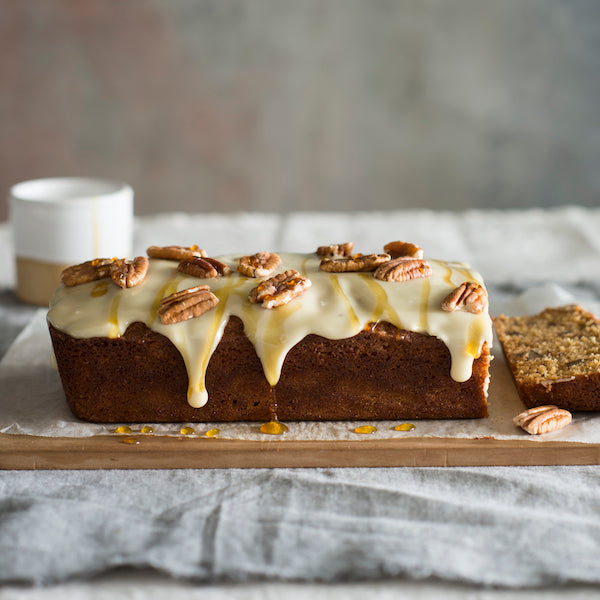BakeClub Blog

How to whisk egg whites
It never ceases to amaze me the transformation that egg whites go through when a whisk is let loose on them.
From a translucent, thick liquid-like consistency to a soft, snowy-white foam made up of tiny, densely packed air pockets, whisked egg whites are what gives flourless cakes, puddings and souffles that characteristically light, airy and heavenly texture.
Egg whites are usually whisked until they reach either ‘soft’ or ‘firm’ peaks, depending on the recipe.
‘Soft’ peaks describes the point at which the egg white mixture becomes thick enough that when the whisk is lifted the mixture forms a peak that will fall back on itself.
‘Firm’ peaks is the next stage the egg whites will reach with more whisking (but not much more). The mixture will become thicker and, when the whisk is lifted, a peak will form that will hold its shape. It is important not to whisk any longer once the stage of firm peaks is reached – if over whisked the foam will split, expelling the liquid, losing much of its volume and becoming dry and curdled-looking.
Three steps to whisking egg whites:
- Put the egg whites in a clean, dry mixing bowl. Often the recipe will say to add acidic ingredient such as cream of tartar to help stabilise the egg whites. The acidity will strengthen the egg white protein bonds meaning that the resulting foam will be more stable (it will also make the egg whites slightly harder to overwhisk!). At this stage the egg whites will be a thick liquid-like consistency (see pic below) – the fresher the eggs (and the more acidic they are) the thicker the egg whites will be.

- Use a balloon whisk or an electric mixer with a whisk attachment (not a paddle or beater attachment) to whisk the egg whites on medium speed (see pic below).

As you start to whisk the egg whites will initially thin but then will gradually start thickening as the foam starts to be established (see pic below).
- Continue to whisk until the egg whites reach the desired consistency as stated in the recipe – either soft peaks (see pic 1 below) or firm peaks (see pic 2 below) – checking them regularly so as not to over-whisk.


Once the egg whites have reach the desired consistency, immediately add some of the whisked egg whites (this may be just a spoonful or up to half the quantity depending on the recipe) to your base mixture and use a spatula or large metal spoon to fold together until the egg whites have ‘loosened’ the base mixture and are combined. Add the remaining egg whites and fold until just combined. The secret is not to over fold/mix as you will only lose much of the valuable air you have incorporated into your egg whites. Bake your mixture straight away.
My top tips for when whisking egg whites:
- As in most baking, the egg whites are best used at room temperature when whisking – they have a greater ability to hold more air at room temperature than if chilled.
- Use the freshest eggs possible when whisking egg whites. The high acidity of fresh eggs causes the proteins in the whites to be tightly knit which will mean the resulting foam will be more stable than one made with stale eggs.
- Remember that any trace of fat, including egg yolk, will stop the egg whites from foaming and increasing in volume when whisked. Make sure all your equipment – bowl, whisk, spatula or large metal spoon – are super clean.
- Don’t ever use a plastic bowl when whisking egg whites. Traces of fat can be trapped in the surface of the bowl and, as you know (see previous point), fat isn’t good when whisking egg whites. Stainless steel, glass or copper bowls are the best to use when whisking egg whites.
- Always separate your eggs into a small dish or bowl before adding the white to the mixing bowl so that if any yolk gets into the white while you are separating them it is easy to remove. Also, if you can’t remove the yolk completely you only have to throw away that one egg white, and not the whole batch that you have already separated.
- Even though you can use a electric mixer, a balloon whisk is my prefered tool for whisking egg whites – the foam will take longer to form but you will have more control over the stage to which you whisk the egg whites and you will be less likely to over whisk them. Using a ballon whisk will also give you a foam with a more even texture than one created using an electric mixer (this is because the whisking action is less vigorous). Remember though, it will take you a lot longer to get to the desired consistency than if using an electric mixer.
- Use the whisk attachment if using a stand mixer or hand-held electric beaters. If your hand-held beaters don’t have a whisk attachment, just use the standard beaters. But don’t use a ‘paddle’ beater as it doesn’t have the ability to incorporate air in the same way. Also when using an electric mixer, whisk the egg whites on medium speed, not high, so that small even air pockets are formed giving you a more stable mixture.
- Keep a close eye on the egg whites as you are whisking them and check the consistency often as it can change very quickly – soft and foamy one minute to dry and unusable the next.
- Once the egg whites have reached the desired consistency, use them straight away by folding them through your base mixture. They will start to lose their volume and to separate if set aside for a length of time before using.
The best (and easiest) way to master this method is by simply getting into the kitchen... so here's my truly fabulous Flourless Chocolate & Hazelnut Cake – a perfect one to practice with (and your family will love you for it!)
Happy Baking!
Photography by Alan Benson. Styling by Jane Hann.








